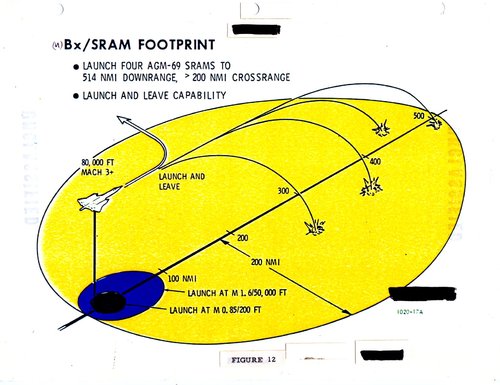As said in the thread title. There were talks about combining the (equally doomed) Skybolt and Valkyrie. Except it ran into a very stupid issue: Skybolt had been build for subsonic release.
Ok then, the B-70 would fly subsonically, launch the Skybolts and get ride of the pylons. And then it could go to Mach 3. Note that Skybolt had a range of 1000 miles.
I would say, a flight profile not unlike the SR-71 border penetration flights. Launch the Skybolts outside Soviet airspace, and then proceed to SRAM release before turning back (or not).
In 1960-62 obviously SRAM didn't existed, so the B-70 would have had gravity nuclear bombs in the internal bay. But how about SRAMs ?
Would have made a terrific weapon system...
Note that a Skybolt was smaller and lighter than the MA-1 pod carried by the B-58. A Skybolt / Hustler combination would have been something...
Ok then, the B-70 would fly subsonically, launch the Skybolts and get ride of the pylons. And then it could go to Mach 3. Note that Skybolt had a range of 1000 miles.
I would say, a flight profile not unlike the SR-71 border penetration flights. Launch the Skybolts outside Soviet airspace, and then proceed to SRAM release before turning back (or not).
In 1960-62 obviously SRAM didn't existed, so the B-70 would have had gravity nuclear bombs in the internal bay. But how about SRAMs ?
Would have made a terrific weapon system...
Note that a Skybolt was smaller and lighter than the MA-1 pod carried by the B-58. A Skybolt / Hustler combination would have been something...

